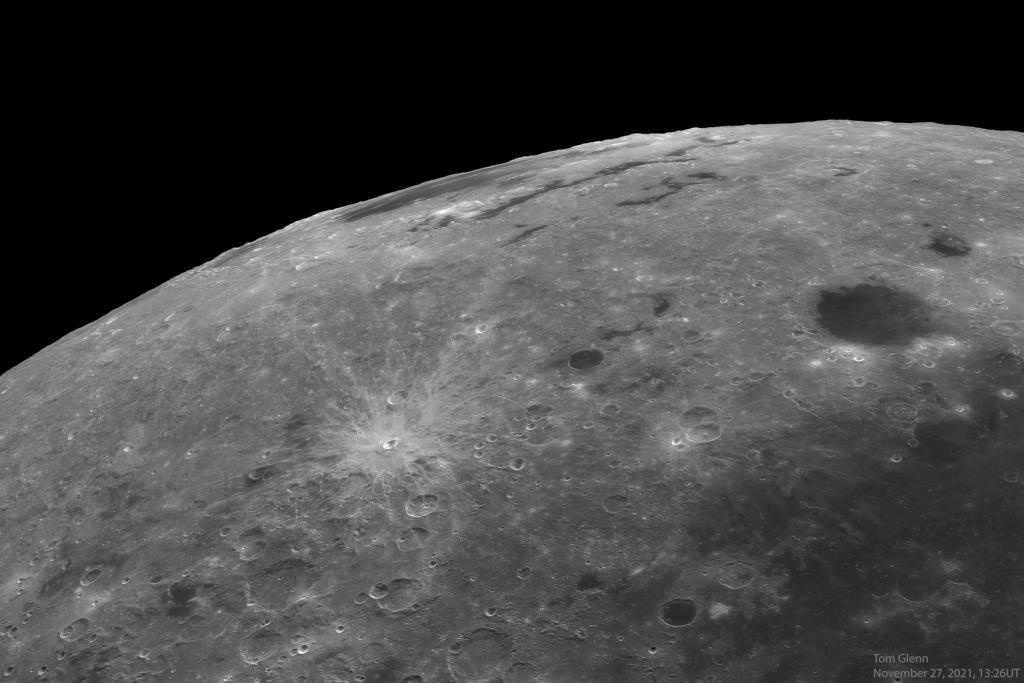2022年1月28日
Western Moon, Eastern Sea
Image Credit & Copyright: Tom Glenn
Explanation: The Mare Orientale, Latin for Eastern Sea, is one of the most striking large scale lunar features. The youngest of the large lunar impact basins it’s very difficult to see from an earthbound perspective. Still, taken during a period of favorable tilt, or libration of the lunar nearside, the Eastern Sea can be found near top center in this sharp telescopic view, extremely foreshortened along the Moon’s western edge. Formed by the impact of an asteroid over 3 billion years ago and nearly 1000 kilometers across, the impact basin’s concentric circular features, ripples in the lunar crust, are a little easier to spot in spacecraft images of the Moon, though. So why is the Eastern Sea at the Moon’s western edge? The Mare Orientale lunar feature was named before 1961. That’s when the convention labeling east and west on lunar maps was reversed.
Tomorrow’s picture: light-weekend
月球西缘的东海
图像提供与版权: Tom Glenn
说明: 东海是月表最吸睛的大型结构之一。然而,这个月表最年轻的大撞击盆地,在地表并不容易见到。不过在这幅摄于月轴倾侧到最佳角度(称为月球正面的天平动)之时的清晰望远镜影像里,可在顶端中央附近的月球西缘,见到这个因透视而大为缩短的月海。这个30多亿年前因小行星撞击而形成、宽将近1,000公里的月海,其同心圆状结构及在月壳上的涟漪,在太空船所拍摄的月球影像里较易分辨。问题来了!为何月球西缘的月海却拥有东海的称号?这是因为东海这个月表结构的命名早于1961年,而从1961年起,月面图上的东与西对调。
明日的图片: light-weekend



